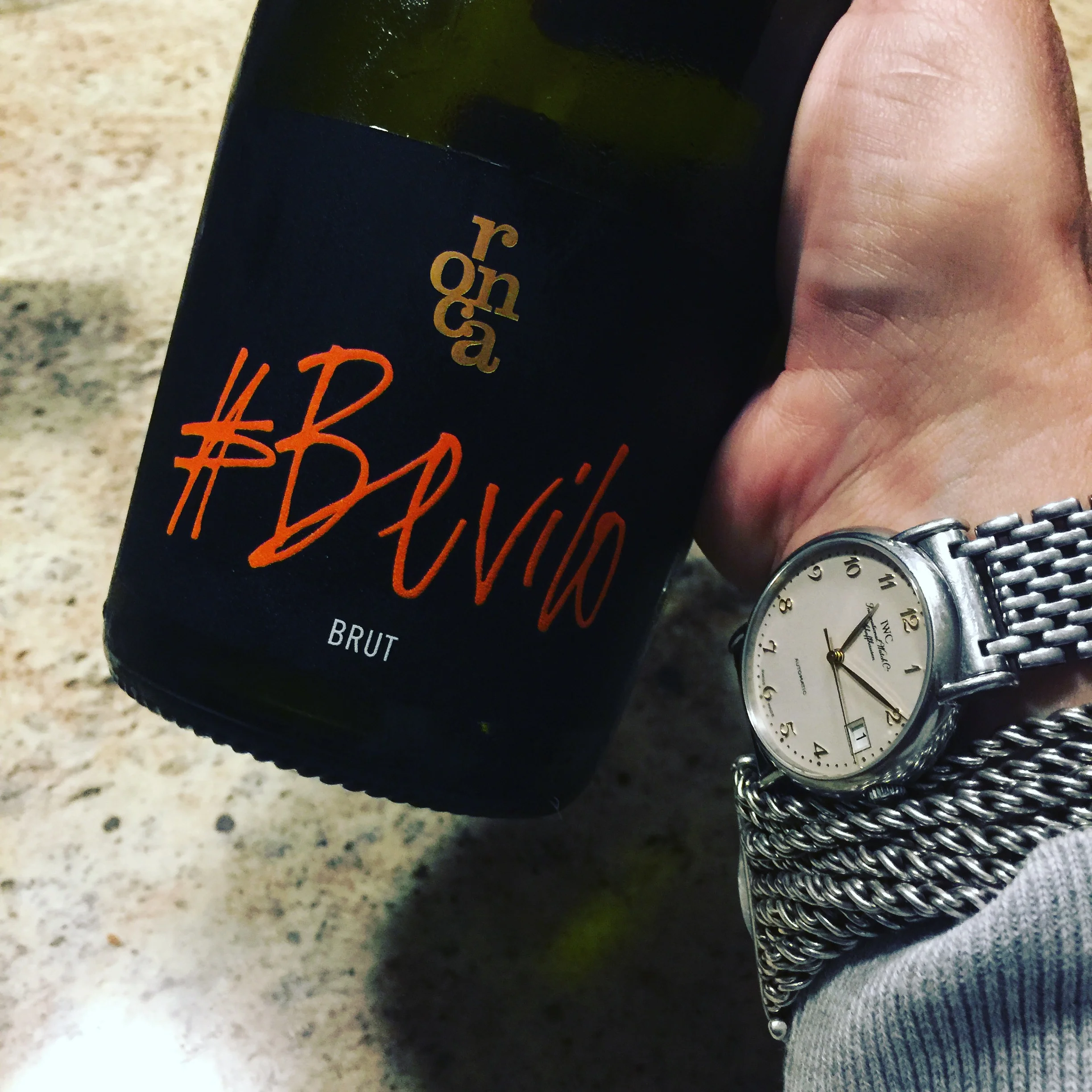Who: Massimo Ronca
Where: Sommacampagna, Verona • Veneto - Italy
Founded: 2rd generation, mid 1900’s
Land: 12 hectares, 126 meters above sea level
Grapes: Garganega, Trebbianello, Trebbiano Toscano, Corvina, + Rondinella
Appellation: Custoza Doc + Bardolino Doc
Viticulture: Organic
Annual Production:
Tasty, easy-going wines from a lovely bio-family farm that not only produces traditional grapes but also, interestedly enough, hectares of Kiwi. Since the 1970’s the Ronca family has been tending their vines on the gentle hills of the Sommacampagna area in the Veneto. It started with Ulterico then to his son Walter, and finally to Massimo who lives at the Sommacampagna winery estate with his family and his parents. Situated in the area south of Lake Garda, the pristine vineyards and winery sit on a breezy knoll where the 3 generations of The Ronca family live and work and play.
The family's vineyards are located in the historic Bardolino and Custoza DOC area, south of Garda Lake, within the Sommacampagna district. It is here where they grow mostly autochthonous grape varietals- Garganega, Trebbianello, Trebbiano Toscano, Corvina, and Rondinella. The Morenic hills of the area are known for producing wines that are rich with minerality and brightness.
Ronca | #Bevilo
Brut
Made from Cortese grapes
Straw yellow color with golden reflections, fine perlage, and persistence. On the nose, fresh notes of white flowers and fruit are highlighted. The palate presents balanced, light, and fruity. Ideal as an entry spumante, it can be consumed throughout the meal above all antipasti and light first courses of sea and fresh-water fish.
“M E D I A
”Delicately enticing scents of white spring flower and yellow stone fruit lead the nose. Bright and tangy, the palate offers ripe peach, tangerine and a mineral note alongside fresh acidity.
89 pts (2016)”
IT’S THE LAW:
• Bianco: Minimum 70% Cortese (locally Bianca Fernanda), Friulano (aka Tai), Garganega, and/or Trebbiano Toscano, with maximum 45% of any one of those varieties; maximum 30% Chardonnay, Malvasia, Manzoni Bianco, Pinot Bianco, Riesling, and/or Welschriesling
• Minimum alcohol level: 11.0% for Bianco;
• Residual sugar: Maximum 7 g/l (0.7%) for Bianco
• For Bianco, minimum approx. 3 months
ABOUT THE CUSTOZA DOC:
History: Established as a DOC in 1971
Vineyard Area: 1,197 ha / 2,957 acres (2015)
Production: 91,850 hl / 1,020,500 cases (2017)
Principal White Grape Varieties: Cortese, Friulano, Garganega, Trebbiano
Ronca | Chiaretto
Bardolino Chiaretto DOC
Sour cherry, apple, and a hint of baking-spice aromas carry over to the easygoing palate along with a confectionery note.
GRAPES: Corvina 90% Rondinella 10%
Intense pink color, with strong aromas reminiscent of the original grapes and fruity aromas of strawberry and raspberry. On the palate, it has a pleasant acidity perfectly balanced by a pleasant sapidity.
“M E D I A
There’s a great balance here between mineral elements and fresh berry nuances that really gives this bright rosé an extra aromatic boost. The mouthfeel is also clean, streamlined, and fresh.”
ABOUT THE BARDOLINO DOC FOR ROSSO:
History: Established as a DOC in 1968
Vineyard Area: 2,688 ha / 6,639 acres (2017)
Production: 182,100 hl / 2,023,000 cases (2018)
Principal Red Grape Varieties: Corvina
IT’S THE LAW:
Minimum alcohol level: 10.5%
Residual sugar: Maximum 10 g/l (1.0%)
Aging: No minimums specified
35–80% Corvina and/or Corvinone (maximum 20% Corvinone); 10–40% Rondinella; maximum 15% Molinara; maximum 20% OANRG (of which no single variety can exceed 10%)
Ronca | Bardolino
Bardolino DOP
Fesh, smoke and berry
APPELLATION: Bardolino dop
GRAPE(S): Corvina, Rondinella
Ronca Bardolino sees traditional maceration of skin with racking off after a few days from the beginning of fermentation and, to accentuate the fermented fruity aromas; the temperature is kept at a maximum of 22-25° C. The alcoholic fermentation is followed by a partial malo-lactic fermentation to obtain more softness and drinkability. Ronca’s is far more pleasant than most Bardolino's- while many have a hard bitterness at the end, this one doe not. The taste is fresh with bits of smoke and easy berry.
“Black pepper, wild cherry and charred-earth aromas follow over to the light-bodied palate along with a hint of salt. It’s lively and enjoyable, with lithe tannins. Drink soon.”
Via Val di Sona, 7, 37066 Sommacampagna VR, Italy
+39 045 896 1641











